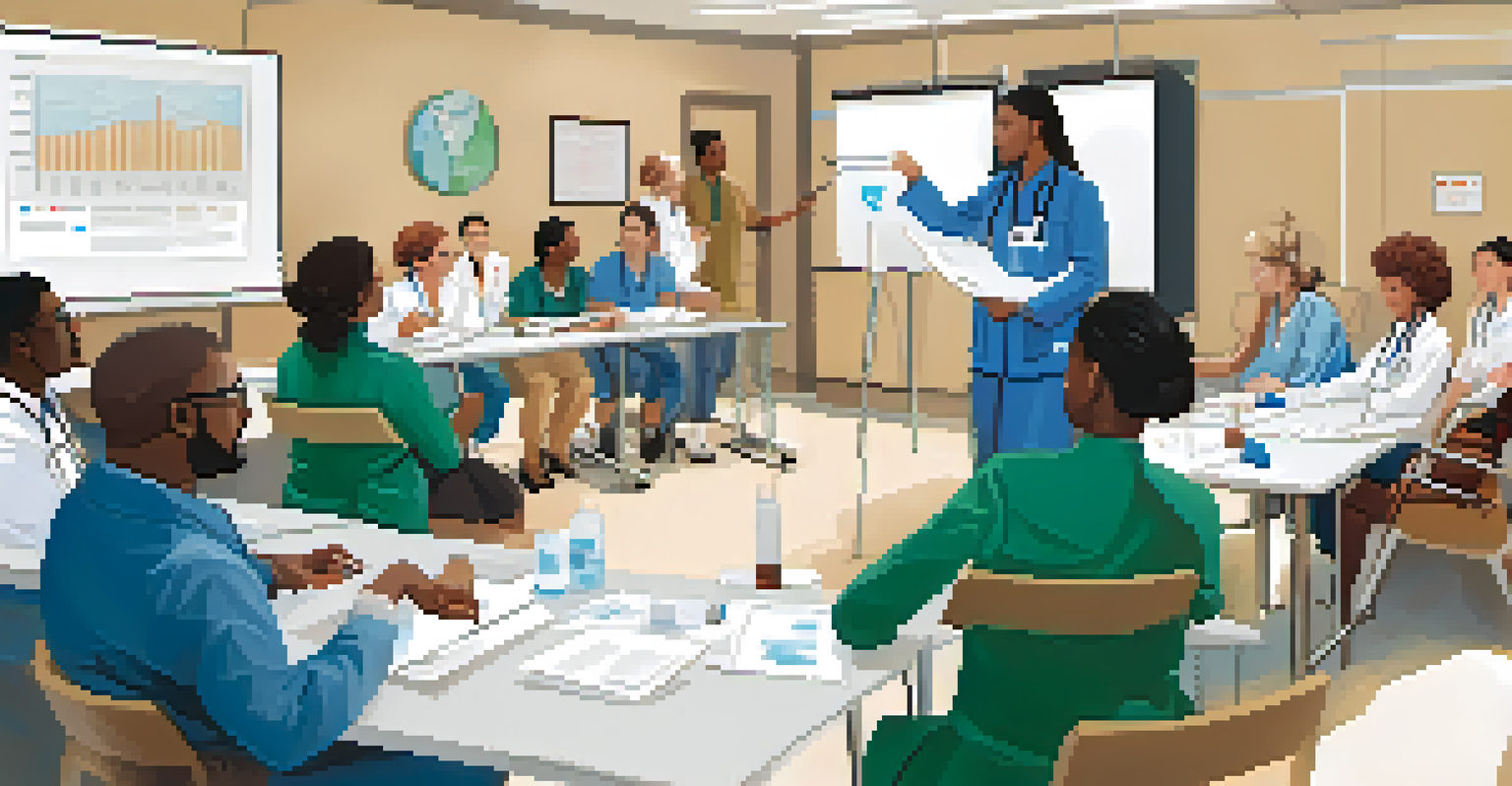The Role of Communication in Patient-Centered Care Models

Defining Patient-Centered Care and Its Importance
Patient-centered care (PCC) is an approach that prioritizes the individual needs and preferences of patients. It emphasizes collaboration between healthcare providers and patients, ensuring that care is tailored to each person. This model contrasts with traditional care, which often focuses more on clinical procedures than on patient experiences.
The most important thing in communication is hearing what isn’t said.
The significance of PCC lies in its potential to improve health outcomes, enhance patient satisfaction, and foster trust between patients and healthcare providers. By actively involving patients in their care decisions, PCC encourages them to take ownership of their health, leading to better adherence to treatment plans.
In essence, patient-centered care is about seeing the patient as a whole person rather than just a diagnosis. This holistic focus is crucial for effective communication, which serves as the backbone of this care model.
The Role of Communication in Healthcare Settings
Effective communication in healthcare settings is essential for ensuring that patients receive the best possible care. Clear dialogue helps in understanding patient concerns, preferences, and expectations, which are vital for tailoring treatment plans. When healthcare providers communicate openly, it creates a sense of safety and trust, encouraging patients to express their needs.

Moreover, good communication reduces the chances of misunderstandings and errors, which can have serious implications for patient health. For example, when a doctor explains a treatment clearly, patients are more likely to follow through with it, leading to better outcomes.
Importance of Patient-Centered Care
Patient-centered care enhances health outcomes by prioritizing individual needs and fostering collaboration between patients and providers.
Ultimately, communication is not just about exchanging information; it's about building relationships. Strong relationships between healthcare professionals and patients can significantly impact the overall effectiveness of care.
Barriers to Effective Communication in Patient Care
Despite its importance, several barriers can hinder effective communication in patient-centered care. Language differences, for instance, can create gaps in understanding, especially in diverse populations. When patients and providers do not share a common language, it can lead to misinterpretations and frustration on both sides.
To be heard is to be healed.
Additionally, time constraints in busy healthcare settings often limit the opportunity for thorough conversations. Healthcare providers may rush through appointments, leaving patients with unanswered questions or concerns. This can diminish the quality of care and leave patients feeling undervalued.
Also, the use of medical jargon can alienate patients, making them feel overwhelmed or confused. When healthcare professionals use complex terminology without explanation, it can impede the open dialogue needed for effective patient-centered care.
Strategies for Improving Communication in Care Models
To enhance communication in patient-centered care models, healthcare providers can employ several strategies. First, using plain language instead of jargon can make information accessible to all patients, regardless of their background. For example, explaining a diagnosis in simple terms can help patients understand their health better.
Active listening is another crucial strategy. By truly focusing on what patients are saying, providers can gather important insights that inform care. This means not only hearing the words but also paying attention to non-verbal cues, which often convey emotions and concerns.
Barriers to Effective Communication
Language differences, time constraints, and medical jargon can hinder effective communication in patient care.
Lastly, encouraging questions and discussions can create an open environment. When patients feel comfortable asking about their health, it fosters a collaborative atmosphere that benefits both parties.
The Impact of Technology on Patient Communication
Technology has revolutionized communication in healthcare, offering new avenues for patient engagement. Telehealth, for instance, allows patients to consult with providers from the comfort of their homes, making it easier for those with mobility issues or busy schedules. This convenience can enhance access to care and improve patient satisfaction.
Moreover, patient portals provide a platform for communication where patients can view their health records, schedule appointments, and ask questions directly. These tools empower patients by giving them more control over their healthcare journey, fostering a sense of involvement and ownership.
However, it's essential to ensure that technology does not replace the personal touch in communication. While digital tools are beneficial, they should complement face-to-face interactions rather than replace them entirely.
Training Healthcare Professionals in Communication Skills
Training healthcare professionals in effective communication skills is vital for fostering patient-centered care. Programs that focus on interpersonal skills, empathy, and active listening can significantly enhance providers' ability to connect with patients. This training equips them to handle sensitive conversations with care and compassion.
Role-playing exercises and simulations can also be effective in preparing healthcare workers for real-world scenarios. By practicing difficult conversations, providers can build confidence and develop strategies for conveying complex information clearly.
Strategies for Better Communication
Utilizing plain language, active listening, and encouraging questions can significantly improve communication in healthcare settings.
Ultimately, investing in communication training not only benefits patients but also enhances job satisfaction for providers. When healthcare professionals feel equipped to communicate effectively, they are more likely to experience a positive work environment.
Evaluating Communication Effectiveness in Care Models
Regularly evaluating communication effectiveness is essential for improving patient-centered care models. Feedback from patients about their experiences can provide valuable insights into areas that need improvement. Surveys and interviews can serve as effective tools for gathering this information.
Additionally, healthcare institutions can assess communication through direct observation of interactions between providers and patients. This approach can reveal specific strengths and weaknesses, enabling targeted interventions to enhance care.

By continuously measuring and refining communication practices, healthcare organizations can create an environment that prioritizes patient needs, ultimately leading to better health outcomes.